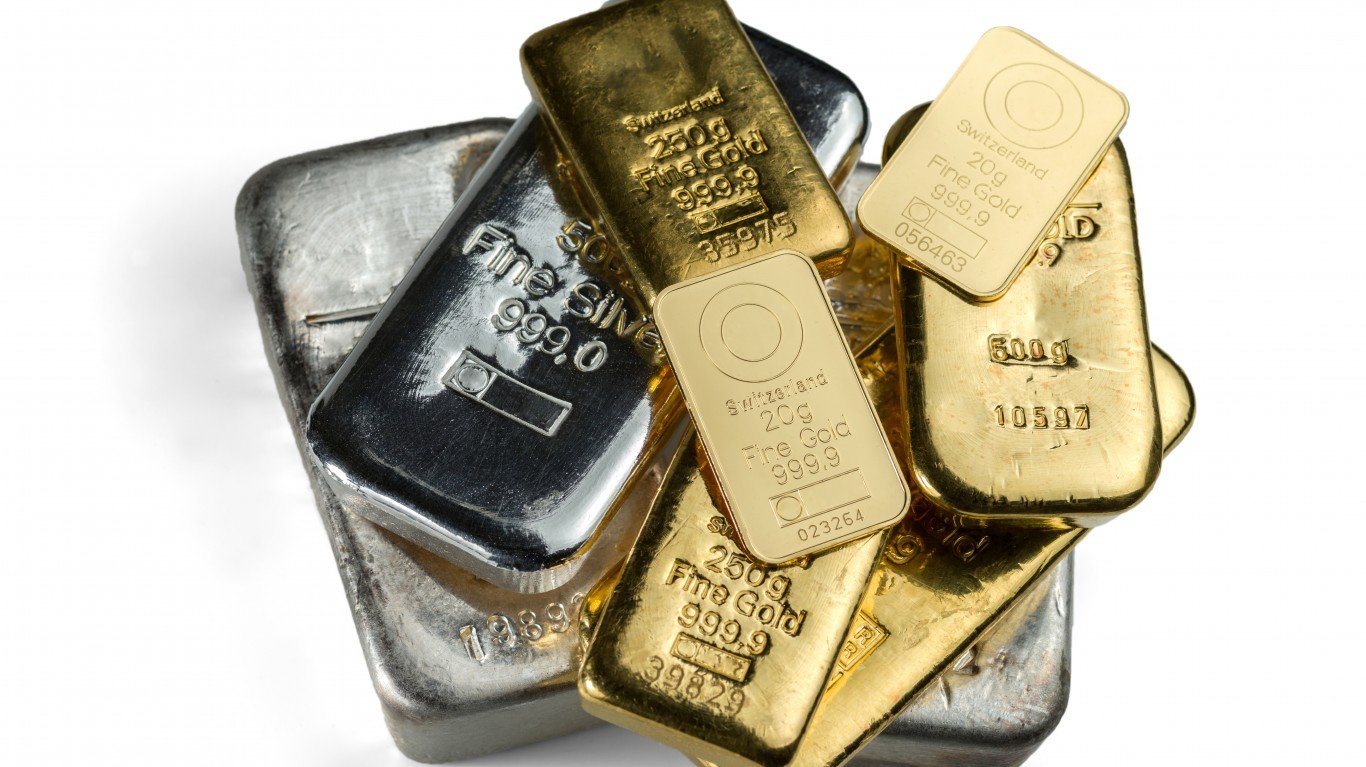compensation for actions taken through them.
Precious metals have seized the spotlight in 2025, riding a wave of economic uncertainty, tariff-induced trade wars and historic volatility in the first quarter. With inflation refusing to fully subside, interest rates remaining elevated and with geopolitical tensions on the rise, investors are increasingly turning to safe-haven assets like gold and silver for protection. One of the primary ways to gain exposure to the action in these commodities is through the S&P GSCI Precious Metals Index (SPGSPM).
This index tracks the performance of futures contracts on two leading precious metals: gold and silver. It’s an important distinction that it follows these contracts — not the physical metal assets themselves — with its holdings primarily focused on three-month forward gold and silver contracts, according to the GSCI fact sheet. This index operates under the umbrella of the larger S&P GSCI Index, which serves as a benchmark for over two dozen commodities across various sectors.
The methodology for the broader S&P GSCI Index, which governs this precious metals sub-index, follows a strict set of rules. For a futures contract to be included, it must meet certain standards for its total dollar value traded (TDVT), which can range anywhere from $5 billion to $30 billion. To maintain its standard, the indexes are reviewed quarterly, a process that ensures contracts that lose eligibility are methodically replaced.
Key Points in This Article:
- Precious metals have outperformed in the first half of 2025, with gold and silver posting gains that trounced the S&P 500.
- The S&P GSCI Precious Metals Index (SPGSPM) can provide investors with exposure via futures contracts.
- Should ETFs be a part of your investment strategy? Why not meet with a financial advisor near you for a complete portfolio review? Click here to get started today. (Sponsored)
Precious Metal Performance

In the year leading up to June 2025, the GSCI Precious Metals Index delivered a stunning 39.1% return, handily outperforming the broader stock market over the same period. Gold futures alone have soared roughly 25% year-to-date, while silver futures have advanced about 24%, according to TradingView data. Over the past 12 months, the GSCI Precious Metals Index has traded in a range of 4,216.79 to 4,321.76.
During this powerful stretch, the price of gold has been on a tear. It surged past the $3,500 per ounce level in April 2025 to hit new record highs. Nervous investors have been flocking to this precious metal for protection from a perfect storm of tariff wars inflation and elevated interest rates. Gold’s impressive gains in 2025 feel reminiscent of the pandemic era, when market uncertainty sent investors scrambling for safety.
Investors often turn to the GSCI Precious Metals Index for portfolio diversification, as its price movements typically show a low correlation to conventional assets such as stocks and bonds. This strategy makes it a useful hedge against both inflation and broad market uncertainty. By following the index, market participants can gain exposure to the performance of gold and silver through futures contracts, bypassing the long-term commitment and logistical hurdles of buying and storing the physical metals.
The post What’s in The GSCI Precious Metals Index? appeared first on 24/7 Wall St..
Click this link for the original source of this article.
Author: Gerelyn Terzo
This content is courtesy of, and owned and copyrighted by, https://247wallst.com and its author. This content is made available by use of the public RSS feed offered by the host site and is used for educational purposes only. If you are the author or represent the host site and would like this content removed now and in the future, please contact USSANews.com using the email address in the Contact page found in the website menu.








